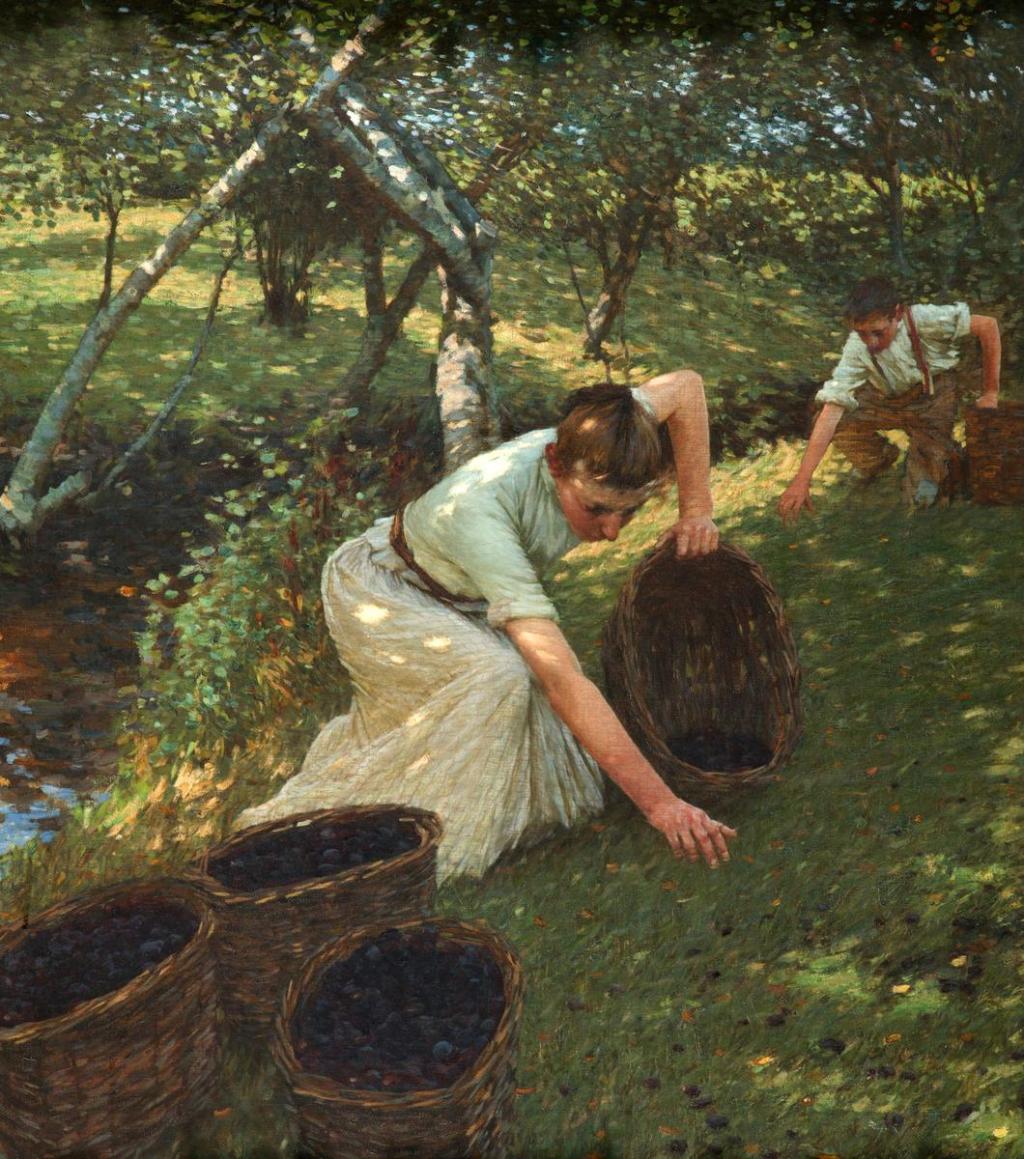In the 1880s, several young British artists returned from training in Paris and painted in Impressionist style. Among them was Henry Herbert La Thangue (1859–1929), one of several British Impressionists who were founder members of the New English Art Club. Current accounts of his paintings usually report that he was a realist, and associated with the Newlyn School, which was also dominated by realism. I hope this article demonstrates that his paintings were Impressionist in style.
La Thangue was born in the town of Croydon, to the south of London, and went to school at Dulwich College, where he became friends with Stanhope Forbes, who later became the leader of the Newlyn School in Cornwall. In 1874 he started studying at the Royal Academy Schools in London, and won a gold medal when he completed there in 1879. This came with a scholarship and a place at the École des Beaux-Arts in Paris, where he became a pupil of Jean-Léon Gérôme, a realist and vocal opponent of Impressionism.
Despite, or perhaps because of, Gérôme’s views, La Thangue was influenced by Naturalists including Jules Bastien-Lepage, who died suddenly in 1884 when La Thangue was still in France, and Pascal Dagnan-Bouveret. He was inevitably exposed to the paintings of the Impressionists and learned to paint landscapes en plein air.

One of La Thangue’s earliest surviving major paintings is this view of The Boat Builder’s Yard, Cancale, Brittany painted in 1881, when he stayed on the Brittany coast during 1881-82. The young Breton woman shown appears quite out of place, with her working dress, clogs and knitting. She’s surrounded by the tools of and shavings from boat-building in wood. Behind her is the frame of a part-constructed fishing boat similar to those seen in the background at the right, a working boat known as a chaloupe thonière.

La Thangue returned to Britain in 1886, where he painted The Return of the Reapers. This shows well what is known as square brush technique, in which a brush with a broad square tip is used to fill large areas of colour quickly, as seen most obviously in the golden field at the left.
He became a supporter of the movement to reform the Royal Academy, which then founded the New English Art Club, with most of the British Impressionists of the day as members. He moved to live in South Walsham, in the flatlands of Norfolk, where this work was painted, and in the early 1890s to Bosham in Sussex.

La Thangue’s style has changed significantly for In the Orchard, which he painted in 1893, presumably in Sussex. His brushwork has changed from square to a profusion of fine marks more typical of Impressionism. Although the figures and baskets of fruit are quite tightly detailed, much of the rest of his canvas is more painterly and atmospheric.

The Man with the Scythe, which he exhibited at the Royal Academy in 1896, is unusually symbolic. In the foreground a young girl is slumped against a pillow, her eyes closed, in extremis, as her anxious mother stands over her. Beyond the gate at the right is the figure of death, a man stealing into the garden with a scythe over his shoulder. Colours are subdued as if this is taking place at dusk.
By the end of the nineteenth century, La Thangue had moved on to live in Graffham, Sussex.

Gathering Plums from 1901 is similar in execution to In the Orchard, above, with a young woman and a boy collecting fallen plums in their wickerwork baskets under dappled light.
From 1901, La Thangue painted frequently on the continent of Europe. He started in Provence, then went to Italy and the Balearic Islands before the First World War.

His undated Autumn Morning shows two figures, a detailed depiction of a young woman bending a small tree branch against her knee, and behind her the vaguer image of an old man who appears to have been gathering wood.
La Thangue painted the last two works when visiting northern Italy, presumably in the early twentieth century.

A Brescian Shore shows the coast of Lombardy, Italy.

Winter in Liguria, which was painted somewhere along the Mediterranean coast between Sanremo and La Spezia, to the east of Nice, is more finely realist, although there is still evidence of his use of a square brush on the walls in the foreground.
La Thangue died in London in 1929. Surprisingly his paintings remain popular with modern collectors, and still fetch good prices, although he doesn’t appear to have retained a place in the history of painting in Britain.

